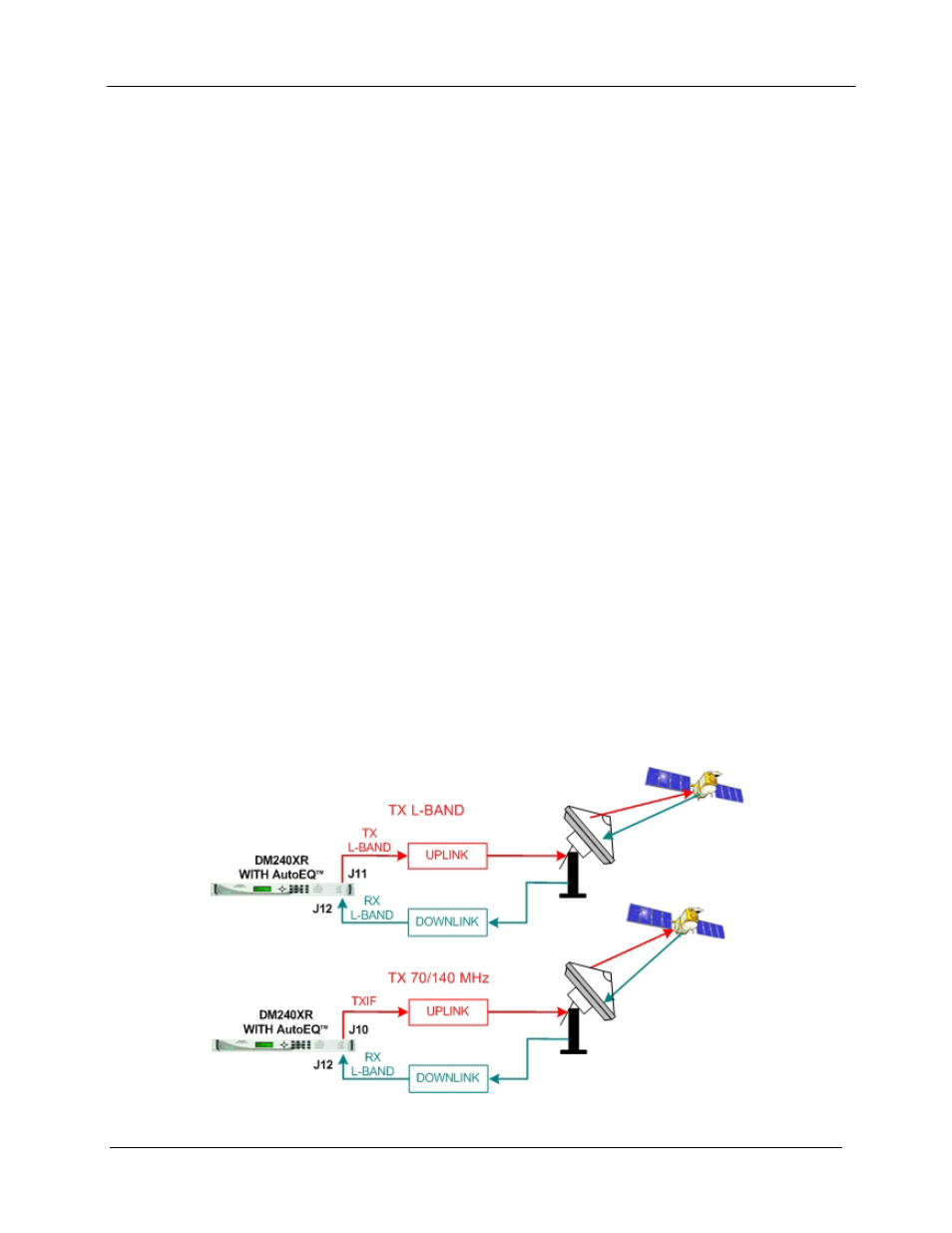Comtech EF Data DM240XR User Manual
Page 183

DM240XR High-Speed Digital Modulator
AutoEQ™ Interface Operation Guide
MN-DM240XR– Revision 13
D–3
AutoEQ™ supports SCPC equalization of Group Delay and Amplitude over the satellite system.
When installed into the PIIC slot of the DM240XR (with Firmware Revision FO5377-J or
higher), the AutoEQ™ Calibration menu will be displayed allowing for selection and monitoring
of the AutoEQ™ functions. The AutoEQ™ will operate over the full transponder from a symbol
rate of 10.1 Msps to 45 Msps.
Note, the 45 Msps AutoEQ™ requires a different PIIC card (PLR5972) than the original PIIC
card (PLR5808) operating to 38 Msps. The new AutoEQ™ card supersedes and replaces the
original one and both are supported by revision N or later firmware.
When the AutoEQ™ Calibration mode is selected, the DM240XR will disable the existing
programmed modulated outbound signal, and replace it with the AutoEQ™ calibration signal at
the same Symbol Rate, Roll off, and Transmit frequency as programmed into the DM240XR.
This signal is transmitted to the satellite, and received (Satellite Loop-Back) by the DM240XR
AutoEQ™ input at the L-Band downlink frequency. The AutoEQ™ calibration mode will
demodulate the received signal, and automatically calculate the required pre-distortion parameters
for the Satellite Link.
This information is read by the DM240XR modulator where the new pre-distort values are
programmed into the outbound carrier, resulting with the required pre-distortion of the TX output.
Upon successful completion of the calibration cycles, the DM240XR will automatically return to
the programmed outbound signal (such as DVB-S2) with the proper pre-distortion for the satellite
loop per the selected symbol rate, roll off and transponder frequency. If any parameters are
changed affecting Symbol Rate or Roll off, AutoEQ™ must be re-calibrated to the new
parameters. At any time, AutoEQ™ can be enabled or disabled.
The DM240XR is capable of retaining 32 AutoEQ™ satellite loop pre-distortion values, which
can be useful for systems requiring relocation to different transponders or Satellites. Once the
applicable transponder is calibrated, the calibration information can be stored in memory for use
now or in the future. All storage locations can be renamed by the user to correspond with the
identification of the transponder, and recalled for operational use.
Figure 2 AutoEQ™ Satellite Loopback
